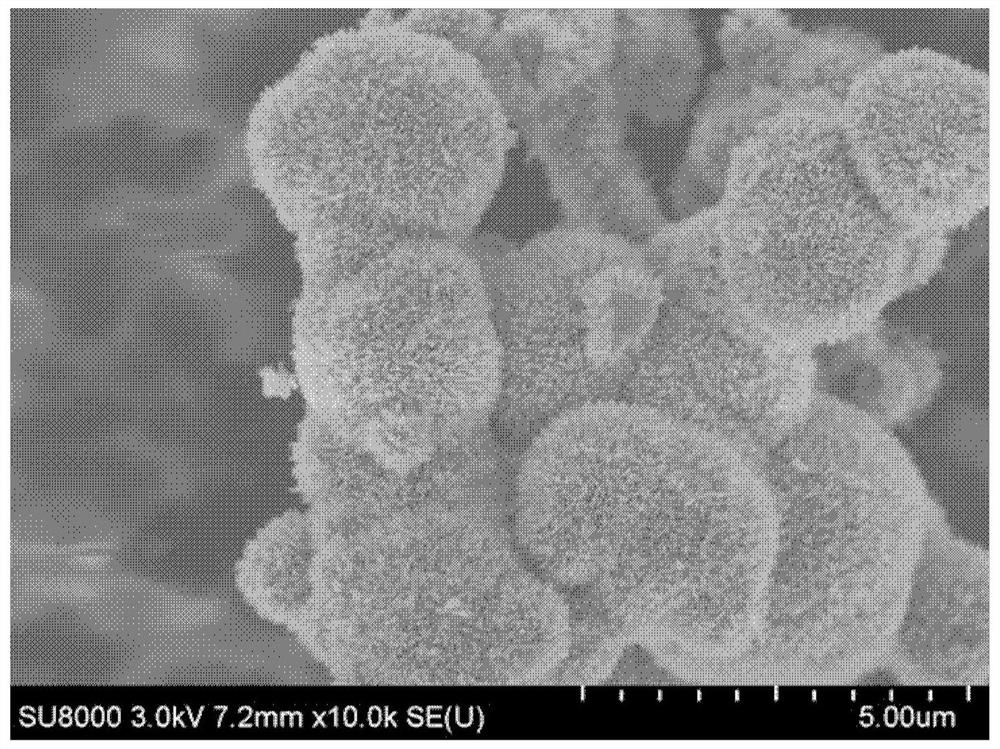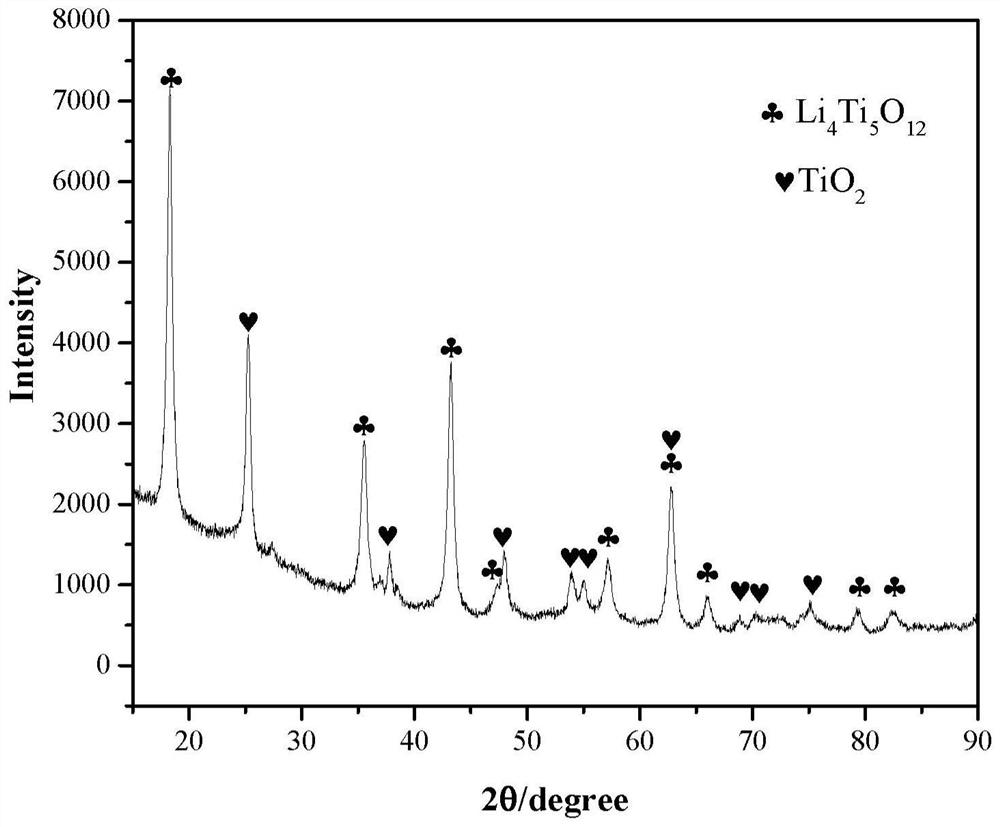Lithium-titanium composite metal oxide micro/nano material and its preparation method and application
A composite oxide and lithium-titanium composite technology, which is applied in metal/metal oxide/metal hydroxide catalysts, chemical instruments and methods, chemical/physical processes, etc. Degradation research and other issues, to achieve the effect of easy large-scale preparation, strong oxidation performance, and simple and easy preparation method
- Summary
- Abstract
- Description
- Claims
- Application Information
AI Technical Summary
Problems solved by technology
Method used
Image
Examples
preparation example Construction
[0036] The method for preparing the above-mentioned lithium-titanium composite metal oxide micro / nano material provided by the present invention, its main steps are:
[0037] 1) Dissolve the lithium-containing compound in a corresponding amount of aqueous solution, add a certain amount of hydrogen peroxide at the same time, and after stirring evenly, slowly add the titanium-containing compound into the solution while stirring continuously. After the precipitate is dissolved and the solution is transparent, it is transferred to a hydrothermal reaction kettle to react for a period of time. After the solution is cooled to room temperature, the precipitate is collected; the precipitate is washed with distilled water and centrifuged, and dried in an oven to obtain a lithium-titanium composite metal oxide micro / nano material precursor;
[0038] In step 1): the molar ratio of lithium and titanium is 1-10:1-10. The aqueous solution containing lithium ions is one of lithium carbonate,...
Embodiment 1
[0045] Take LiOH·H 2 O 0.336g, hydrogen peroxide 1mL and distilled water 20mL were placed in a 100mL beaker, and stirred evenly at room temperature. Subsequently, 0.681 mL of tetrabutyl titanate was slowly added to the above aqueous solution, stirred by electromagnetic at room temperature to become a transparent liquid, and transferred to a 50 mL stainless steel reaction kettle. The reaction kettle was placed in a muffle furnace and reacted at 130°C for 12h. After the reaction was completed, it was cooled to room temperature, and the white precipitate was collected. The precipitate is washed and dried at 80° C. for several hours to obtain the precursor of the lithium-titanium composite metal oxide micro / nano material. The precursor was burned in an air atmosphere at 500 °C for 6 hours in a tube furnace to obtain the target product Li 4 TiO x , its SEM and XRD characterization results are as follows Figure 1A , Figure 1B and Figure 1C shown. Figure 1A , Figure 1B Th...
Embodiment 2
[0047] Take LiOH·H 2 O 0.168g, hydrogen peroxide 1mL and distilled water 20mL were placed in a 100mL beaker, and stirred evenly at room temperature. Subsequently, 0.681 mL of tetrabutyl titanate was slowly added to the above aqueous solution, stirred by electromagnetic at room temperature to become a transparent liquid, and transferred to a 50 mL stainless steel reaction kettle. The reaction kettle was placed in a muffle furnace and reacted at 130°C for 12h. After the reaction was completed, it was cooled to room temperature, and the white precipitate was collected. The precipitate is washed and dried at 80° C. for several hours to obtain the precursor of the lithium-titanium composite metal oxide micro / nano material. The precursor was burned in an air atmosphere at 500 °C for 6 hours in a tube furnace to obtain the target product Li 2 TiO x , its SEM and XRD characterization results are as follows Figure 2A , Figure 2B and Figure 2C shown. Figure 2A , Figure 2B ...
PUM
| Property | Measurement | Unit |
|---|---|---|
| diameter | aaaaa | aaaaa |
| particle diameter | aaaaa | aaaaa |
Abstract
Description
Claims
Application Information
 Login to View More
Login to View More - R&D
- Intellectual Property
- Life Sciences
- Materials
- Tech Scout
- Unparalleled Data Quality
- Higher Quality Content
- 60% Fewer Hallucinations
Browse by: Latest US Patents, China's latest patents, Technical Efficacy Thesaurus, Application Domain, Technology Topic, Popular Technical Reports.
© 2025 PatSnap. All rights reserved.Legal|Privacy policy|Modern Slavery Act Transparency Statement|Sitemap|About US| Contact US: help@patsnap.com



